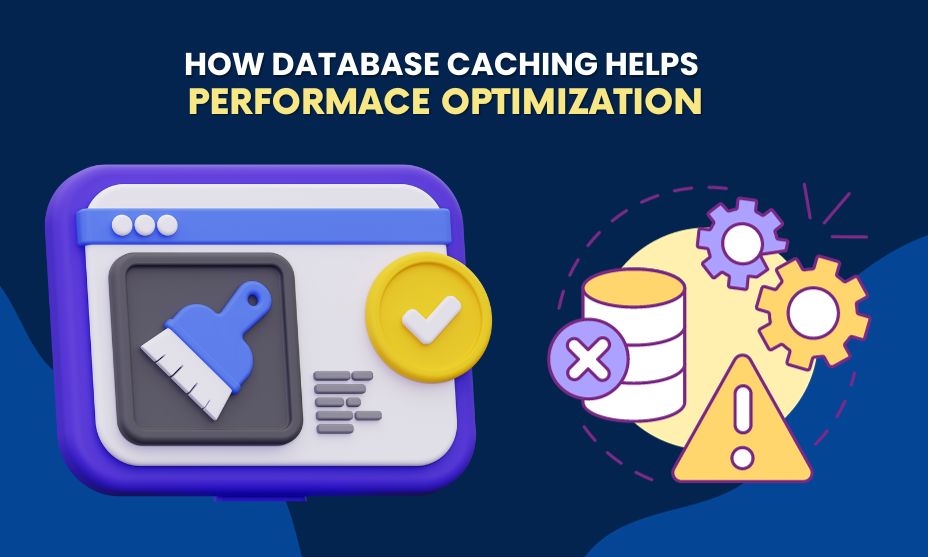Best Caching and Performance Optimization Techniques

Performance optimization is always important in software development procedures. Moreover, modern-day competition has made it compulsory for companies to follow comprehensive strategies to improve the performance of their tools and software. One of the most effective ways of improving performance is through caching. It involves storing frequently accessed data in your storage location to make fetching more swift. Also, it reduces the need to compute them repeatedly. Besides, it leads to enhanced user experience and engagement. We have developed this guide to explore the best caching and performance optimization techniques to make applications more responsive and faster.
What is Caching?
Caching is a process of storing frequently accessed data for the sake of reducing the latency and load on the system. Generally, it stores information necessary for operating the application. There could be various levels on which you can apply this high-end technology. Two of them are elaborated on below.
1 – Browser Caching
Browser caching is one of the most common ways of storing static assets, like images, JavaScript files, and CSS files, on the client end. Whenever a user browses a website, the browser automatically captures and stores the caches in your storage. Thus, it takes no time to load when you revisit the same page. The main reason is that the need to reaccess them from the server diminishes.
2 – Server-Side Caching
Server-side caching also allows processing the content and storing the required data on the server. Hence, it can quickly retrieve the data to serve subsequent requests more efficiently. There are also two types of this caching.
a. Page Caching
Page caching involves capturing the whole HTML pages and serving users without even processing them. However, it is helpful only for static and semi-static content.
b. Object Caching
This type involves caching specific data objects. Generally, it captures database query results or API responses. Hence, the loading time reduces to a greater extent.
3 – Types of Caches
Before heading toward performance optimization keys, it is essential to understand different types of caches. You can get the complete information in the following section.
1 – In-Memory Caching
In-memory caching stores data in the RAM of a server or client’s PC to deliver high-speed access to the stored data. However, such type of storage can be restricted by the memory capacity. Higher storage ensures that you can reach them again and again.
2 – Content Delivery Network Caching
We all heard about a common word CDN. Its full form is Content Delivery Network. CDN caches feature the capturing of static assets and content at multiple locations worldwide. Whenever a user visits the content, the nearest CDN edge server provides the essential caches to reduce latency. Consequently, you can enjoy fast loading time.
3 – Browser Caches
It is the most common type of cache, as described previously, and is used to store static assets, like images and scripts. More often, the data is stored locally on the user’s device.
Best Practices for Caching and Performance Optimization
It is crucial to implement caching effectively to optimize the performance. Moreover, developers should also follow the below-mentioned practices to guarantee brilliance during the work.
1 – Cache Invalidation
Invalidating caches is necessary when they become outdated. They must be set to expire or invalidate after a specific period. So users can pocket the enhanced experience. Developers can also integrate time-based expiration in the working model. Similarly, an event-driven expiration model can keep cached data fresh for faster loading.
2 – Cache Key Design
Another best approach to optimize the performance is through properly designed cache keys. They must be unique to each data item. Furthermore, these caches must be unique to each data item. As a result, they can showcase dependencies and variations. Above all, a well-structured cache key can prevent over-stuffing and pollution.
3 – Cache Compression
Storing larger caches requires large storage capacity as well as increased bandwidth requirements. That’s why you need to compress the caches for better performance within your required limits. It becomes essential, especially for large objects such as images and documents.
4 – Cache Backing Strategies
Caches are vital for a webpage or application to work. However, there may be conditions when a required cache is missing from the data sets. Under such circumstances, following cache-backing strategies is the only option to go with. It lets you handle cache misses gracefully by retrieving it when required.
How Database Caching Helps in Performace Optimization?

Database caching has also emerged as the top solution for optimizing the performance of your application and software. It plays a major role in storing frequently accessed data and computations. Thus, the time to fetch the information from the respected sources faces a decline. Above all, the exclusive benefits are faster loading time, reduced server load, and improved user experience. Besides, it features lower bandwidth consumption. Consequently, your application or browsing becomes more responsive and efficient. We have elaborated on its functioning in the following section.
1 – Query Result Caching
Query result caching guarantees storing frequently executed databases in an in-memory cache. Thus, it minimizes the loading time to a great extent. Further, it reduces the load on the server and speeds up response time.
2 – Object-Relational Mapping
Another functional approach of database caching is that it delivers built-in caching libraries. In this way, you can cache the results of complex database queries. Ultimately, the number of database round-trips reduces significantly.
3 – Query Optimization
Query optimization is not the story of the basic timeline. However, it optimizes the performance by retrieving only the required data. The only requirements are to use appropriate indexes and avoid N+1 query problems.
Final Verdicts
In this highly competitive environment, it’s become an absolute requirement to optimize the performance of an application to deliver an improved user experience. Caching has played a game-changer role in this regard by significantly improving response times. Additionally, it puts minimal load on the servers, making it extensively seamless to work on a mobile application, web browser, or any other software. As a result, you can take your performance to a sky-high level, meeting clients’ requirements and driving more success.




